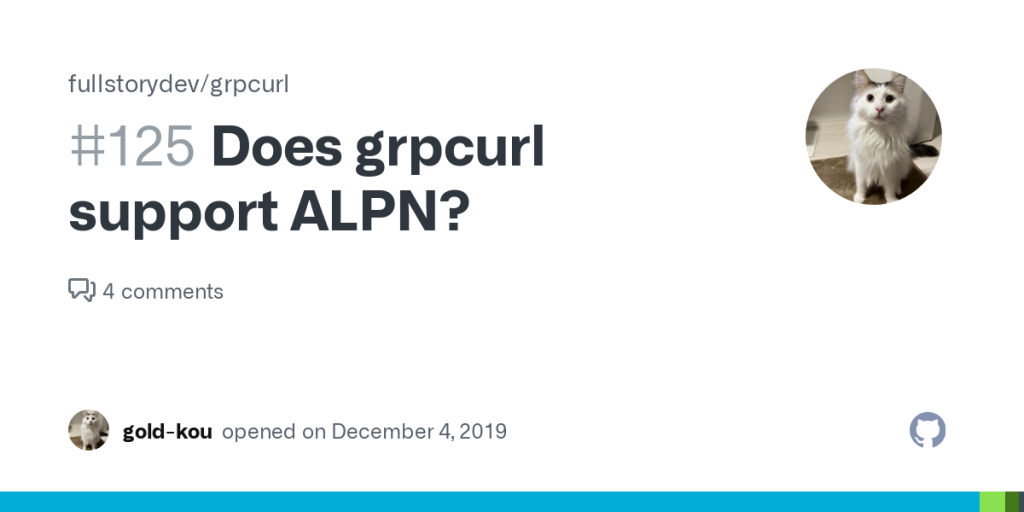gRPCurl is a command-line tool that enables developers to interact with gRPC servers in a similar way to how curl is used for HTTP services. One of its key advantages is its platform versatility. gRPCurl is a cross-platform utility, meaning it can be run on major operating systems including Linux, macOS, and Windows. This flexibility allows developers to use the tool in a wide range of development environments, whether they are working on a local machine, within Docker containers, or on remote servers.
Additionally, gRPCurl is distributed as a standalone binary, which simplifies its installation and usage across platforms. It supports both x86 and ARM architectures, expanding its usability to a broader set of devices, including cloud-native environments and edge computing setups. This makes gRPCurl an accessible and practical tool for testing, debugging, and exploring gRPC APIs regardless of the underlying system.
Supported Operating Systems for grpcurl
Linux Platform and Compatibility with grpcurl
Linux stands out as one of the most widely adopted platforms among developers and server administrators, making it an essential environment for tools like grpcurl. This powerful command-line tool is fully compatible with major Linux distributions, which include but are not limited to Ubuntu, Debian, Fedora, CentOS, and Red Hat Enterprise Linux. The popularity of these distributions in enterprise environments, cloud deployments, and local development setups ensures that grpcurl is not only compatible but also performs reliably across varied system configurations. Developers working within Linux benefit from the tool’s native execution, allowing them to query gRPC services without needing to configure complex dependencies or environments.
Installing grpcurl on Linux Systems
Installing grpcurl on Linux is a straightforward process that aligns well with the typical workflows of Linux users. Most users prefer downloading a precompiled binary that matches their system architecture, which can be placed in a directory included in the system’s PATH for immediate use. For those who prefer package management systems, grpcurl can also be installed via Linux package managers such as apt or yum, depending on the distribution in use. Moreover, advanced users often incorporate grpcurl into automated scripts and shell environments, enabling them to test or interact with gRPC endpoints as part of continuous deployment processes or routine operations.
macOS Support for grpcurl
macOS is another primary platform supported by grpcurl, widely used among developers, especially those in mobile, web, and cross-platform development. The tool offers full support for both Intel-based Macs and the newer Apple Silicon devices, including the M1 and M2 series. This ensures that users of modern Mac hardware can utilize grpcurl natively without performance penalties or the need for emulation layers. Given that many developers on macOS engage in API testing and microservices development, grpcurl fits naturally into their toolchain.
How to Install grpcurl on macOS Devices
Installation on macOS is simple and convenient thanks to Homebrew, the most commonly used package manager on this platform. By running a single command, developers can download and install grpcurl directly into their system, ready to use from the terminal. Alternatively, users may opt to download the official binary release from trusted sources such as GitHub, which can then be added to their execution path. Whether using Intel architecture or Apple Silicon, the grpcurl binary offers consistent functionality across macOS versions and chipsets.
grpcurl on Windows Operating Systems
Windows users are not left out when it comes to grpcurl compatibility. The tool is fully supported on Windows environments, making it accessible to a broad base of enterprise developers, DevOps engineers, and system administrators who rely on Windows for their daily operations. Native support means that grpcurl runs without requiring compatibility layers or virtual machines, providing direct access to its full range of features for querying and interacting with gRPC services.
Installation Options for grpcurl on Windows
To install grpcurl on Windows, users have a couple of practical options. The most convenient method is through Chocolatey, a popular package manager for Windows that simplifies software installation. With Chocolatey, grpcurl can be installed and updated using a single command. Alternatively, users can download the executable directly from the official grpcurl releases page, place it in a folder, and add that folder to the system PATH. This allows the tool to be run from any command prompt or PowerShell terminal, making it versatile for both automated scripts and manual testing scenarios.
Supported Architectures for grpcurl
x86 and x86_64 System Compatibility
grpcurl supports a wide range of system architectures, ensuring flexibility across both personal and enterprise computing environments. The most commonly supported architectures are x86 and x86_64, which cover the majority of desktop and server hardware in use today. These architectures are the standard across traditional computing environments, including virtual machines and physical servers. As a result, grpcurl performs efficiently on systems built with Intel or AMD processors, providing full command-line functionality for interacting with gRPC services, debugging APIs, and automating integration tasks.
Support for ARM and ARM64 Platforms
The increasing use of ARM and ARM64 processors has prompted grpcurl to support these architectures as well. Devices such as Raspberry Pi, Apple’s M1 and M2 computers, and many cloud-based virtual machines use ARM architecture for performance and power efficiency. grpcurl is optimized for these systems, enabling developers to run the tool on lightweight hardware without sacrificing speed or functionality. This is particularly valuable for IoT applications, edge computing scenarios, and mobile backend services that rely on ARM-based systems. The availability of grpcurl on ARM architectures also allows seamless development and testing across diverse device types and deployment environments.
Running grpcurl in Containerized Environments
grpcurl in Docker and Container Workflows
Modern development workflows increasingly rely on containerization, and grpcurl is well-suited to run within Docker containers. Its lightweight, single-binary design makes it easy to include as part of a container image. Developers often add grpcurl to their containers to facilitate internal testing or health checks within microservices architectures. Because grpcurl does not require external dependencies, it can be executed inside even minimal Docker environments, reducing image size and startup times. This makes it ideal for debugging containerized gRPC services without needing to expose them externally.
Integrating grpcurl into CI/CD Pipelines
In continuous integration and delivery pipelines, grpcurl provides an essential tool for verifying service functionality before code is pushed to production. By scripting grpcurl commands into CI/CD workflows, teams can test service contracts, simulate client calls, and validate responses in automated environments. Since grpcurl runs reliably across different platforms and inside containers, it easily integrates into pipeline tools such as GitHub Actions, GitLab CI, Jenkins, and others. This cross-platform reliability ensures that grpcurl functions consistently whether deployed on a Linux runner, Windows server, or macOS-based build agent.
Alpine Linux Compatibility and Minimal Environments
Alpine Linux is a popular choice for creating lightweight container images, and grpcurl is compatible with this minimal distribution. Developers using Alpine can install grpcurl either by downloading the binary or compiling from source if required. This compatibility is crucial for organizations that prioritize small image sizes and fast deployment times. Alpine’s minimal footprint, combined with grpcurl’s binary efficiency, supports highly optimized workflows for performance-sensitive applications and edge services.
Cross-Platform Usage Tips for grpcurl
Portability of the grpcurl Binary
One of the greatest advantages of grpcurl is its portability. Since it is distributed as a precompiled, standalone binary, it can be easily copied from one environment to another without requiring installation of external libraries or complex configuration. This makes grpcurl ideal for developers who work across multiple machines or switch between operating systems. Teams can standardize on a single grpcurl version and use it consistently across development, staging, and production systems, ensuring uniform behavior regardless of platform.
Consistent Command-Line Experience
Whether on Linux, macOS, or Windows, grpcurl offers a consistent command-line interface that behaves the same across platforms. Developers familiar with the tool on one operating system can use it on another without needing to learn new syntax or workflows. This cross-platform consistency enhances productivity and reduces onboarding time for new team members. It also supports automation, since grpcurl scripts written on one platform can be reused on another with minimal or no modification.
Managing Paths and Environment Configuration
To maximize the convenience of grpcurl usage, developers should ensure that the binary is located in a directory included in the system’s PATH environment variable. This allows grpcurl to be executed from any terminal window without navigating to its specific directory. On Unix-based systems like Linux and macOS, setting this up involves adding the path to .bashrc or .zshrc configuration files. On Windows, it involves adjusting the PATH in the system environment variables. Proper configuration ensures seamless access to grpcurl and supports efficient development workflows.
Limitations and Platform-Specific Considerations
Addressing Known Issues and Workarounds
While grpcurl is highly reliable across platforms, there are some platform-specific quirks or known issues that developers may encounter. For instance, on certain Windows versions, terminal output formatting might behave slightly differently, particularly when handling JSON responses or color-coded logs. In such cases, using alternative terminal emulators or adjusting output options within grpcurl can provide effective workarounds. Similarly, file system permissions on Linux or macOS may require adjusting execution privileges when grpcurl is first downloaded, particularly if it is marked as non-executable by default.
Handling Execution Permissions Across Operating Systems
Execution permissions can vary between Unix-based systems and Windows, which may lead to initial confusion when setting up grpcurl. On Linux and macOS, users often need to set the executable bit manually using the chmod +x command after downloading the binary. Failure to do so can result in permission errors that prevent grpcurl from running. On Windows, executables do not typically require such permissions, but the system may block or warn users about running unsigned binaries. Understanding these differences is essential for smooth operation and deployment of grpcurl across diverse environments.
Conclusion
grpcurl is a powerful and versatile command-line tool designed to work seamlessly across a broad range of platforms. With strong support for Linux, macOS, and Windows, along with compatibility for both x86 and ARM architectures, grpcurl fits easily into any development or operations workflow. Its use in containerized environments, along with its portability and consistency, ensures that teams can rely on it for debugging, testing, and automating gRPC service interactions. While minor platform-specific considerations exist, these are easily managed with proper setup and configuration. Overall, grpcurl’s wide-ranging platform support makes it an indispensable tool for modern API development.


